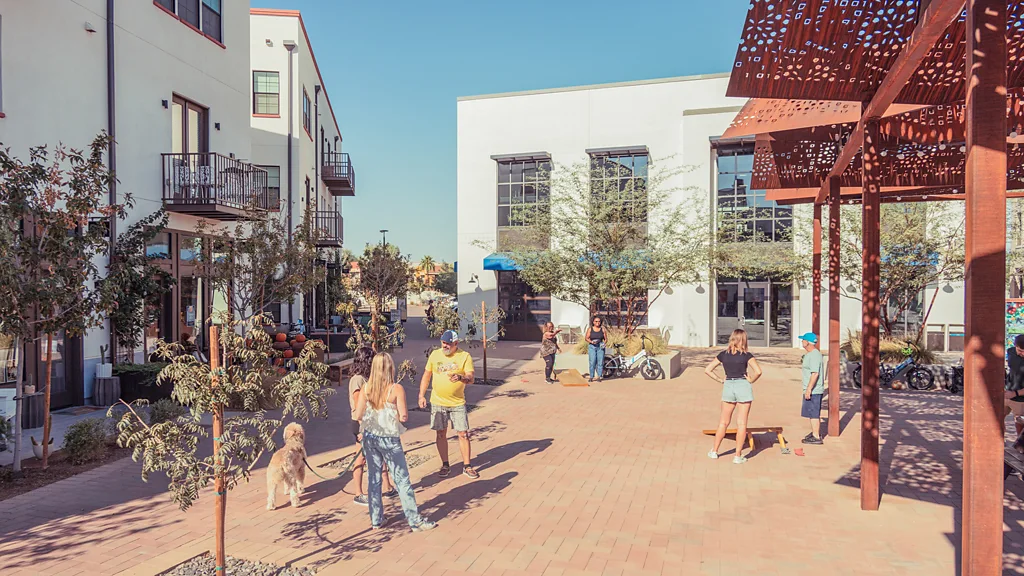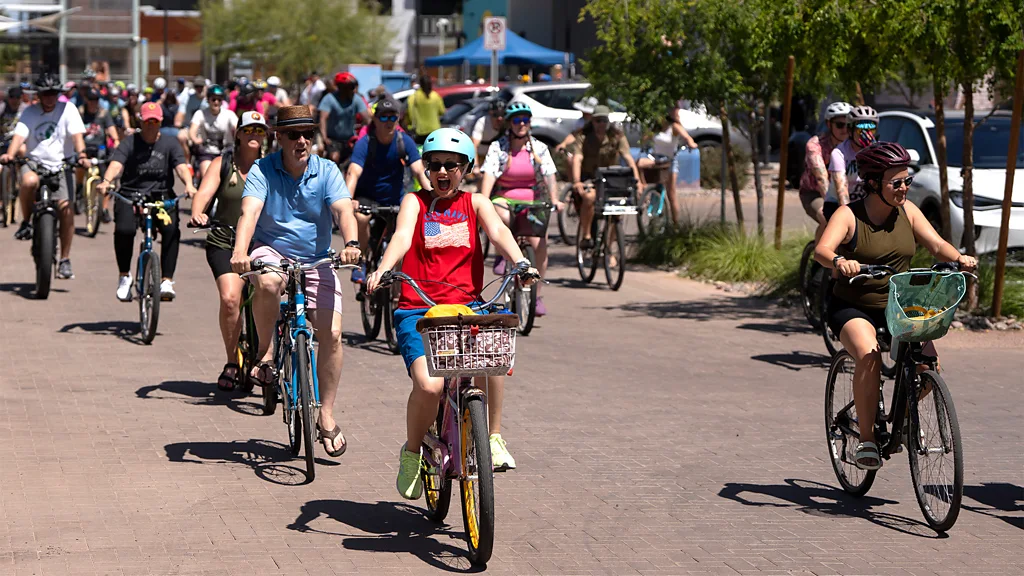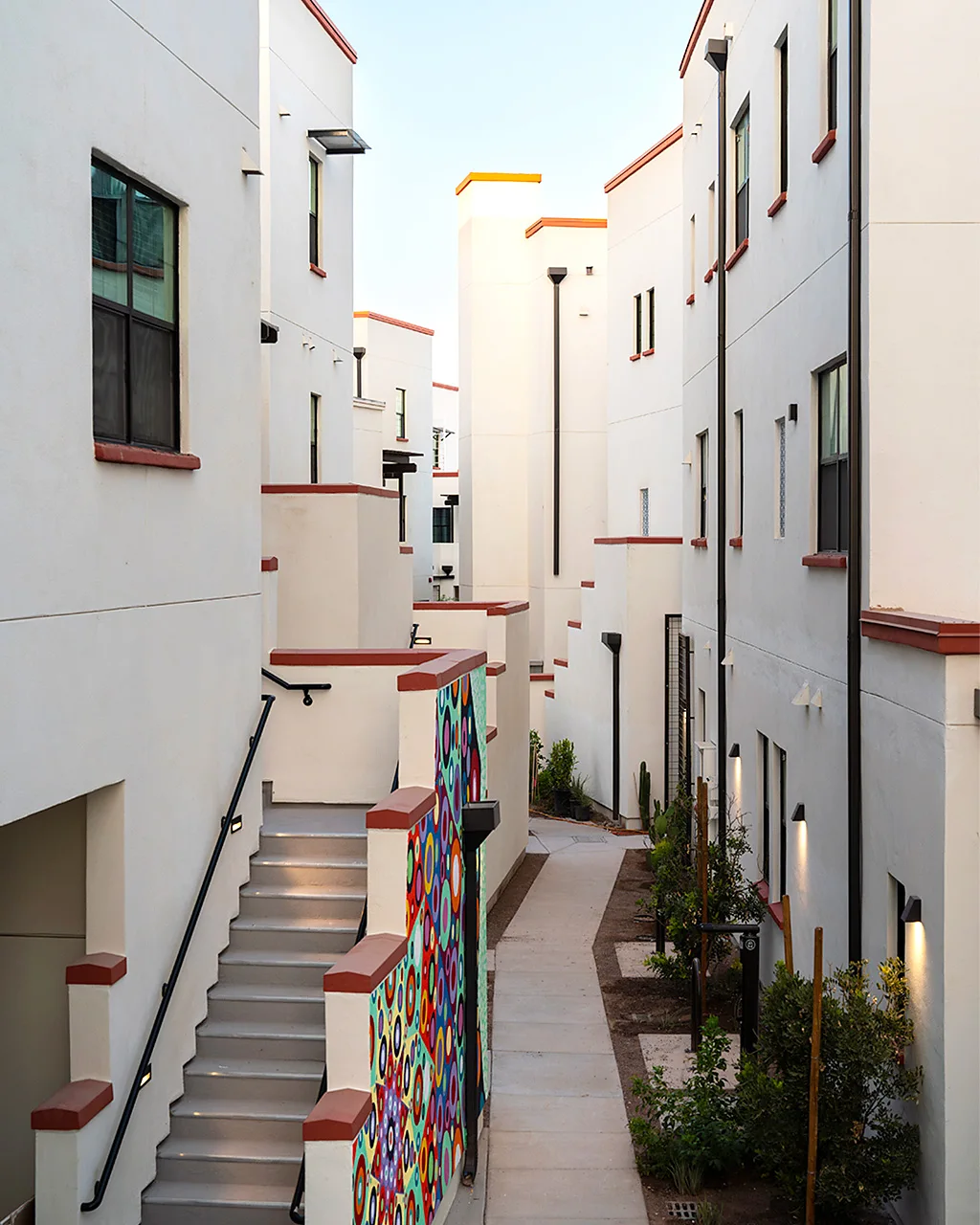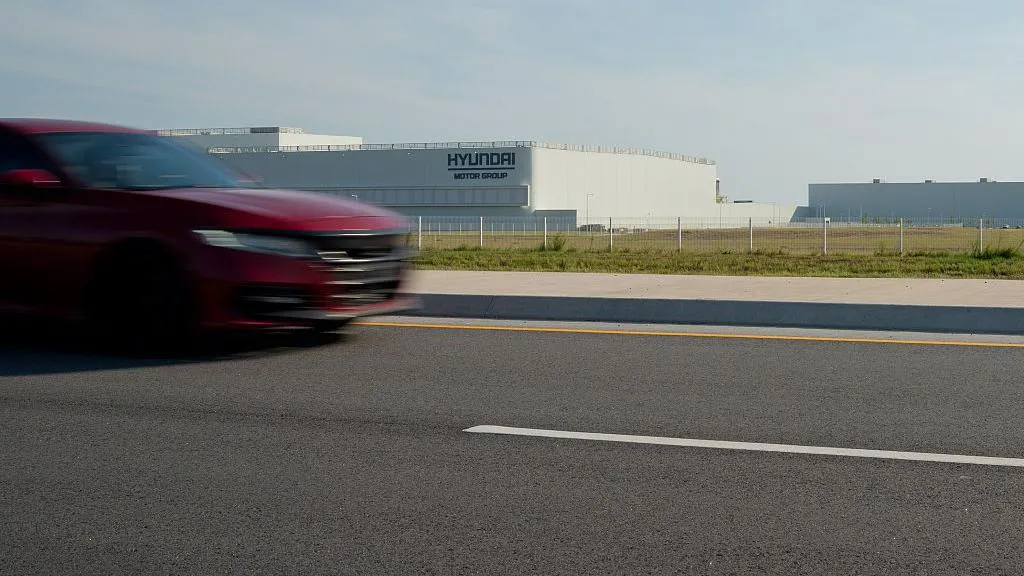In Tempe, Arizona, a bold experiment is underway to rethink American urban living. Culdesac, a 17-acre community built from scratch, has banned private cars altogether — replacing roads and parking lots with plazas, pedestrian walkways, and Mediterranean-inspired courtyards.
Residents describe the development as feeling more like a European village than a U.S. suburb. “It’s like being in Greece,” said resident Sheryl Murdock, who moved to Culdesac while completing a postdoctoral degree in ocean sustainability. “I don’t want to get in my car for everything — I prefer the 15-minute city concept.”

A City Without Cars
Designed by architect Daniel Parolek, Culdesac draws inspiration from Italian hill towns and French coastal villages, places built before automobiles shaped urban planning. The neighborhood is self-sufficient, with restaurants, shops, a dog park, a pool, a coworking hub, and a doctor’s office all within walking distance.
Public transit connects residents to the rest of the Phoenix area. A light rail stop sits at Culdesac’s entrance, linking directly to downtown and the airport. Residents and visitors can also rely on e-bike rentals, self-driving taxis, and shared electric cars available for short-term use.
Cooler by Design
The development is also engineered to combat Arizona’s extreme heat. Buildings are painted bright white to reflect sunlight, positioned close together for shade, and designed with cross-ventilation in every unit. Narrow “paseos,” or walkways, funnel breezes through the complex, creating what Harvard researchers have described as a microclimate up to 40°F cooler than surrounding streets.

A Model for the Future
Culdesac has attracted entrepreneurs, students, and eco-conscious residents who value a car-free lifestyle. About 21 small businesses now operate within the community, ranging from a Mexican restaurant to artisan studios and sustainable shops. Market days bring live music and food stalls, giving the neighborhood the feel of a European plaza.
Advocates say the project challenges the U.S. model of sprawling, car-dependent suburbs. “Once you pull the cars out, there’s so much more opportunity to make a vibrant, thriving community,” Parolek explained.
Culdesac’s backers plan to expand the concept to other cities, buoyed by growing interest from local governments and developers seeking sustainable alternatives to car-centric design.
“Tempe has proven that Americans are willing to live car-free, even in one of the country’s most car-dependent regions,” said Erin Boyd, who leads government relations for the company. “It’s shifted the conversation about what’s possible in U.S. development.”
For visitors, a trip to Culdesac offers a glimpse of what future cities might look like: walkable, community-driven, and designed for people instead of traffic. 700 701 702 703 704 705 706 707 708 709 710 711 712 713 714 715 716 717 718 719 720 721 722 723 724 725 726 727 728 729 730 731 732 733 734 735 736 737 738 739 740 741 742 743 744 745 746 747 748 749 750 751 752 753 754 755 756 757 758 759 760 761 762 763 764 765 766 767 768 769 770 771 772 773 774 775 776 777 778 779 780 781 782 783 784 785 786 787 788 789 790 791 792 793 794 795 796 797 798 799 800 801 802 803 804 805 806 807 808 809 810 811 812 813 814 815 816 817 818 819 820 821 822



